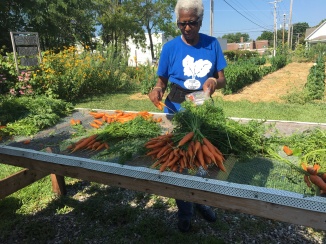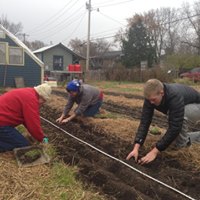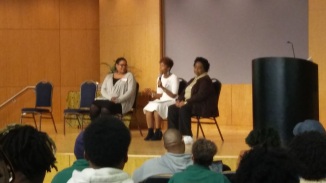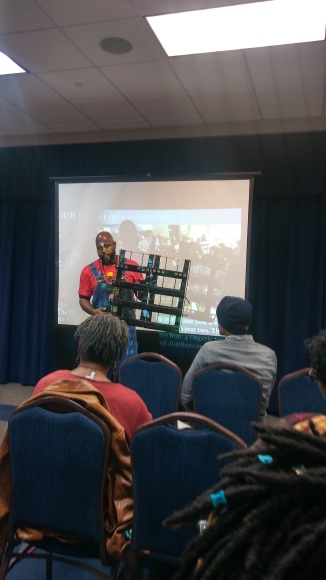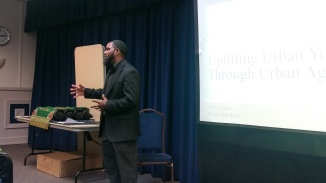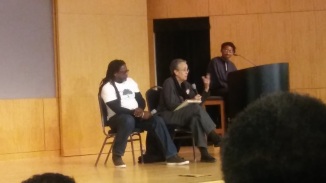By Trish Woolbright
The last few weeks have been really exciting, as CCUA’s Opportunity Gardens Staff has finally been able to get back outside to help families in Columbia build their gardens and kick off the growing season. It’s our busiest time of the year, and we love every minute! To celebrate, we thought we would share two stories about our gardeners.
N. is a 50 yr old transgender veteran who applied to Opportunity Gardens after learning about the program in the newspaper. When N. came to us, they were living on just $1.50 in food stamps every day and could not cook with an oven or a stove because of PTSD. They needed help with fresh foods that could be easily cooked with a crock pot or microwave and could be stored easily. At the same time, N. was anxious about meeting new people, being outside the house for very long, or being “a failure”. In fact, N’s world had become very small and reclusive. We started N. with one small garden bed, and over the next three years N. worked really hard to learn everything they could. Those three years made all the difference in the world! N. was shocked to discover just how abundant a garden could be. It was overwhelming! Now N. spends more time outside, has gotten to know their neighbors, and shares garden tips with fellow gardeners. N. learned how to plan the garden to grow the specific varieties of food they liked, and also practiced freezing and drying the produce to make it last longer. N. is proud of losing 20 lbs. Because of their improved diet and more active lifestyle, and can now touch their toes. As N’s confidence in their gardening skills grew, we installed two more raised beds and fruit perennials. We are so proud of them for all the accomplishments and the positive results gardening has had in their life. We know we have helped someone find their passion in gardening for life.
__________________________________________________________________________________________
T. is a mother of 4 who was once homeless and unable to find work. She had found help through another agency, even gaining an internship so that she could in turn help others, and was working hard to build a better life for her family. One day, Opportunity Gardens staff came to that agency to share information about the Opportunity Gardens Program. T. was intrigued, but she also had a really hard time believing that she herself could garden. The more we talked about helping her clients, though, the more she wanted it for herself too.
She was scared, and had a lot of questions. “Will there be snakes?! What about getting sick from the food if I do it wrong? What happens if I get dirt all over me, won’t I get some disease or a bug will bite me? What if I do it wrong and it looks bad and the neighbors get upset? How am I going to find the time, I have kids, and school and this internship!? It’s already all too much, but my kids and I need to eat more vegetables and fruits! We need this, but I’m scared!”
All of these concerns come up often for new gardeners. Taking risks means you have a safety net or a back up plan, but living on the edge of homelessness or with the experience of trauma can mean that these risks are HUGE – too big for someone to consider taking. For example, getting sick can mean time off work, the loss of a job or a home, and medical bills that you can’t afford. Opportunity Gardens helps take the risk out by giving you that safety net while you learn. We come with the right equipment, bring the right plants which you have chosen for yourself, do reminders, and share tips all along the way as we guide people towards independently growing and eating whole foods they grew from seeds or small plants.
T. decided to take the risk with our help. We started her with a pretty small garden, encouraging the the whole family to help with the work. By mid-summer, though, the challenges of a busy – and changing – family schedule had led the family to abandon their garden. T. felt bad and was going to give up, telling us, “I told you I couldn’t do it!” We asked her, “Did you eat from the garden?” She said, “Well yes, those were the best salads of my life, the greens were amazing, and the kids loved it! We just lost track of it and couldn’t keep up.” We responded with, “Well then let’s find the veggies under these weeds together and we will start over! It’s never too late!”
T. did not believe us, but we got to work anyway. What we found shocked even us! Under all of the weeds abundance was waiting. T’s garden was growing in spite of the neglect, and we had to have 2 giant bowls and a grocery bag to haul the bounty back to her kitchen! She was grateful we didn’t give up and said, “I can see how it’s like this in the rest of my life. I might give up before I get the abundance, but I shouldn’t quit. It might still be ok.”
We made a plan to help keep this from happening in the future, working around the difficulties and challenges of T.’s very busy schedule. The kids manage watering and harvesting from some of the plants, we put down more mulch to keep the weeds at bay, and we made a less complicated garden plan. So far there have been no bugs we can’t handle…and there have definitely been no snakes in the garden!

